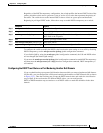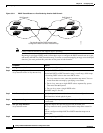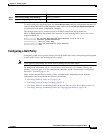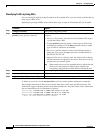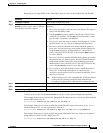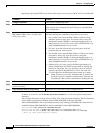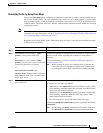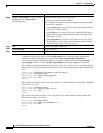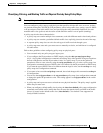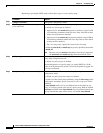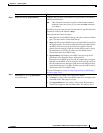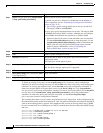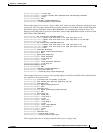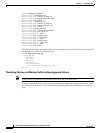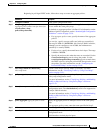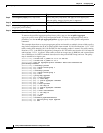
33-53
Catalyst 2960 and 2960-S Switch Software Configuration Guide
OL-8603-09
Chapter 33 Configuring QoS
Configuring Standard QoS
Classifying, Policing, and Marking Traffic on Physical Ports by Using Policy Maps
Note To use policing and marking, the switch must be running the LAN Base image.
You can configure a policy map on a physical port that specifies which traffic class to act on. Actions
can include trusting the CoS, DSCP, or IP precedence values in the traffic class; setting a specific DSCP
or IP precedence value in the traffic class; and specifying the traffic bandwidth limitations for each
matched traffic class (policer) and the action to take when the traffic is out of profile (marking).
A policy map also has these characteristics:
• A policy map can contain multiple class statements, each with different match criteria and policers.
• A policy map can contain a predefined default traffic class explicitly placed at the end of the map.
• A separate policy-map class can exist for each type of traffic received through a port.
• A policy-map trust state and a port trust state are mutually exclusive, and whichever is configured
last takes affect.
Follow these guidelines when configuring policy maps on physical ports:
• You can attach only one policy map per ingress port.
• If you configure the IP-precedence-to-DSCP map by using the mls qos map ip-prec-dscp
dscp1...dscp8 global configuration command, the settings only affect packets on ingress interfaces
that are configured to trust the IP precedence value. In a policy map, if you set the packet IP
precedence value to a new value by using the set ip precedence new-precedence policy-map class
configuration command, the egress DSCP value is not affected by the IP-precedence-to-DSCP map.
If you want the egress DSCP value to be different than the ingress value, use the set dscp new-dscp
policy-map class configuration command.
• If you enter or have used the set ip dscp command, the switch changes this command to set dscp in
its configuration.
• You can use the set ip precedence or the set precedence policy-map class configuration command
to change the packet IP precedence value. This setting appears as set ip precedence in the switch
configuration.
• A policy-map and a port trust state can both run on a physical interface. The policy-map is applied
before the port trust state.
• When you configure a default traffic class by using the class class-default policy-map configuration
command, unclassified traffic (traffic that does not meet the match criteria specified in the traffic
classes) is treated as the default traffic class (class-default). Class default is not supported on
Catalyst 2960-S switches.



